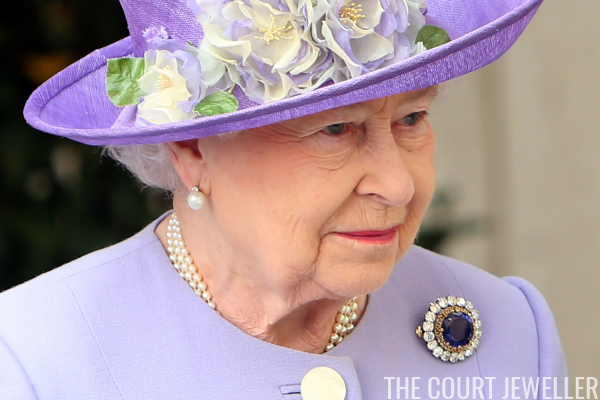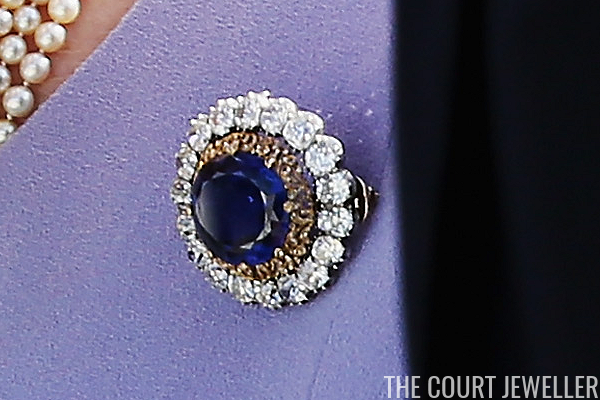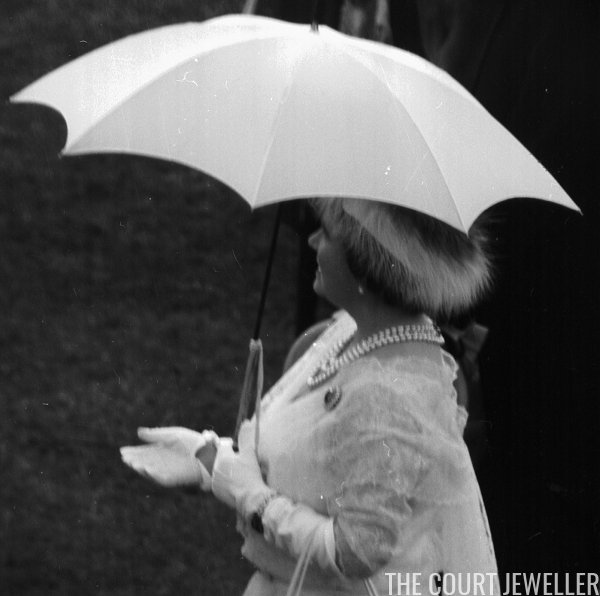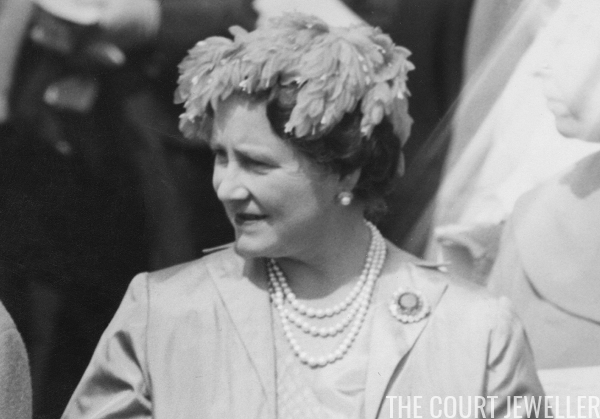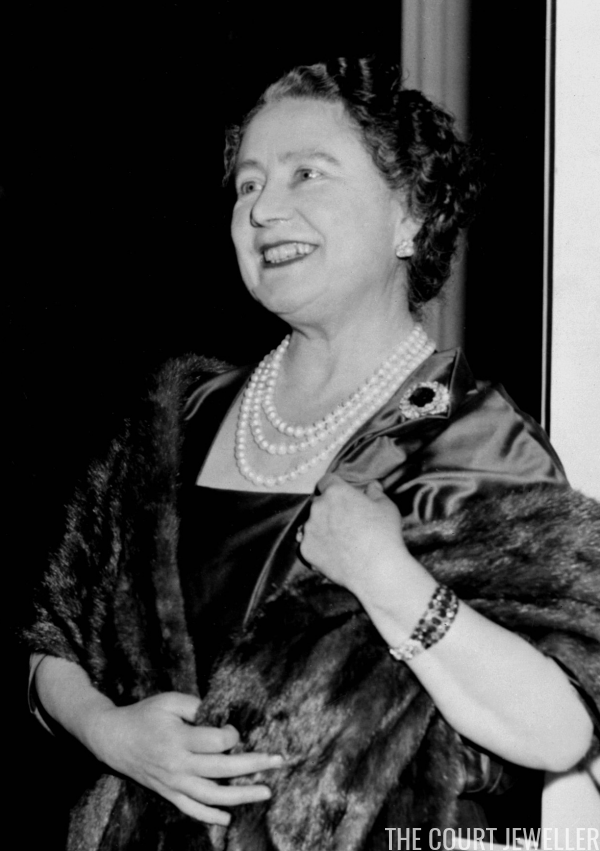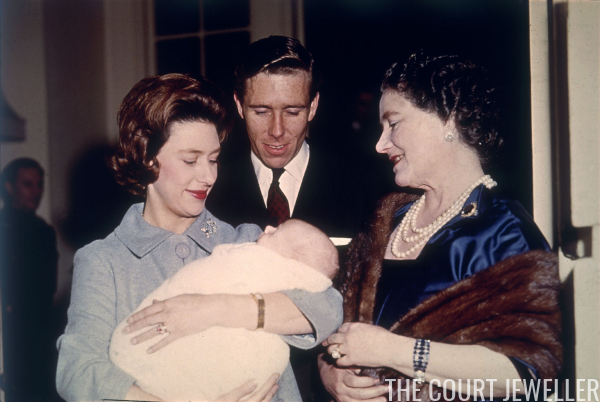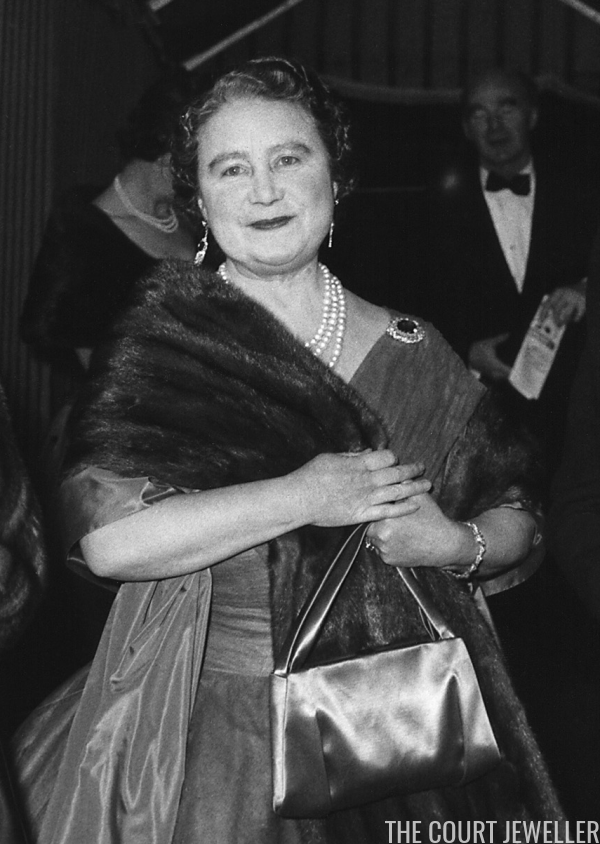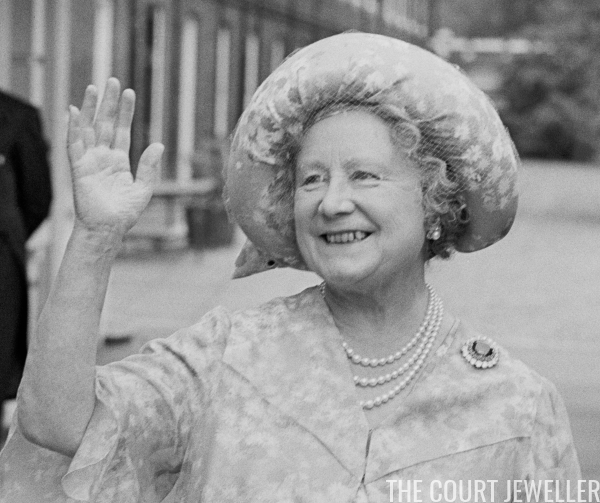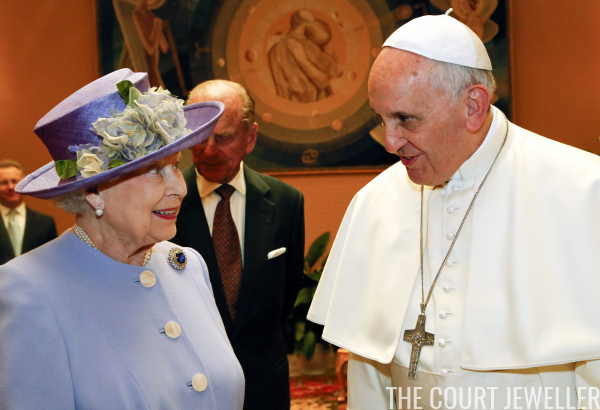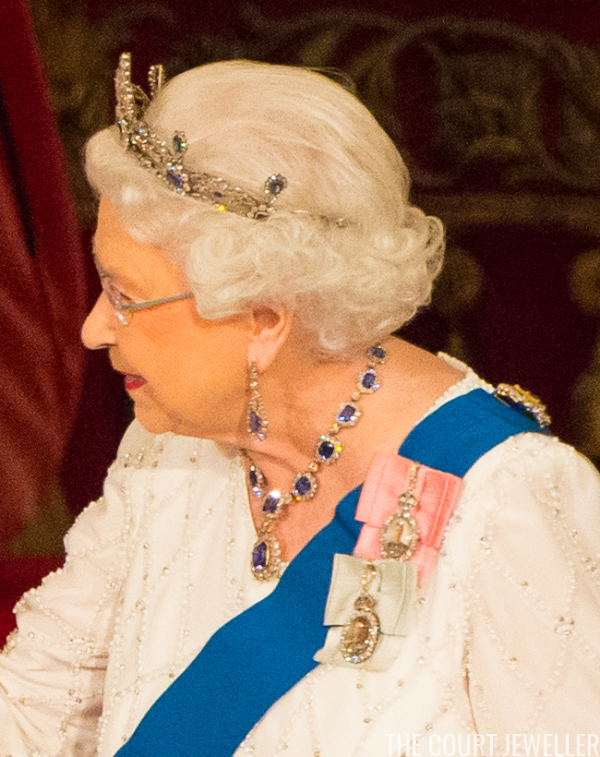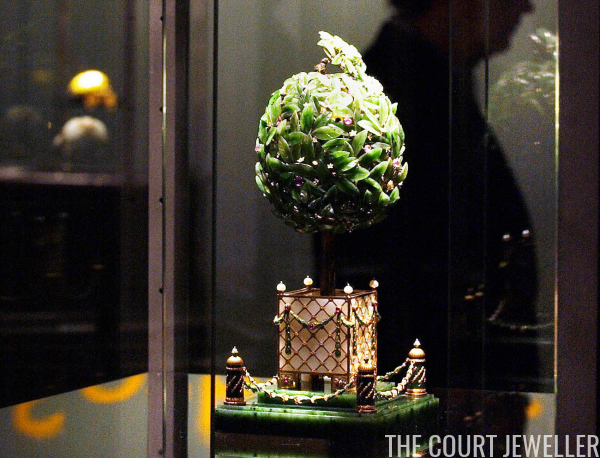 |
| The Bay Tree Egg is displayed at Sotheby’s in New York ahead of its auction, 8 January 2004 (STAN HONDA/AFP/Getty Images) |
Most of the jewels we focus on here on the blog are wearable pieces of art, but in imperial Russia, some of the most fabulous bejeweled pieces were objects — more specifically, Fabergé eggs. The presentation of jewel-encrusted eggs was an Easter tradition for the last two Russian emperors. Today we’re looking at one of my very favorite imperial Easter eggs: the Bay Leaf Egg.
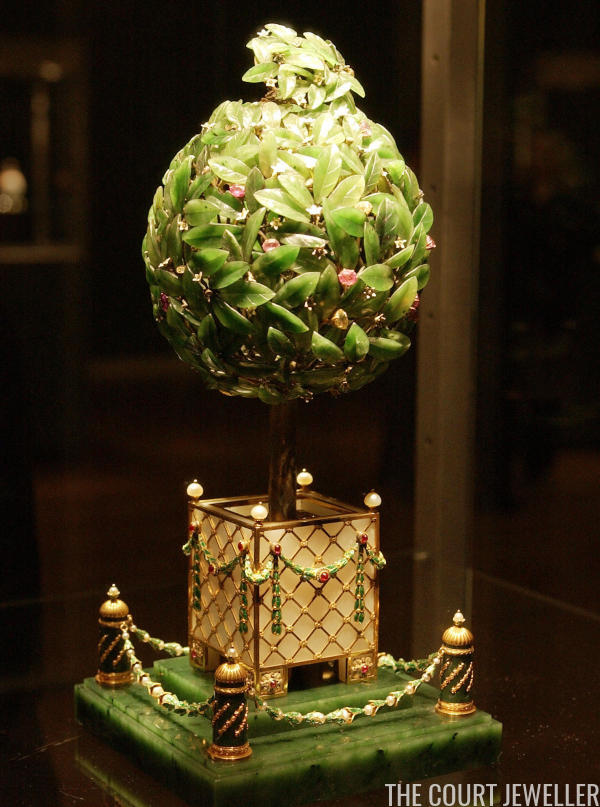 |
| The Bay Tree Egg is displayed at Sotheby’s in New York ahead of its auction, 8 January 2004 (STAN HONDA/AFP/Getty Images) |
Tsar Alexander III and his son, Tsar Nicholas II, presented eggs to their wives and mothers to mark nearly every Easter holiday from 1885 until 1917. The eggs were created in the workshop of Peter Carl Fabergé, and 43 of the 50 that were made for the imperial family survive today This egg, the Bay Tree Egg, was made in 1911 for Dowager Empress Marie Feodorovna, Tsar Nicholas II’s mother.
You’ll sometimes also see it called the “Orange Tree Egg,” in part because its design was based on the kinds of French royal orange trees that you’d see in places like Versailles, where the trees are similarly housed in boxes. Fabergé was reportedly inspired by a little eighteenth-century mechanical orange tree that he saw during a visit to France when he created this bay tree, which opens at the top to reveal its surprise: a tiny feathered bird who rises from the egg, flaps his little wings, and offers the viewer a sweet song.
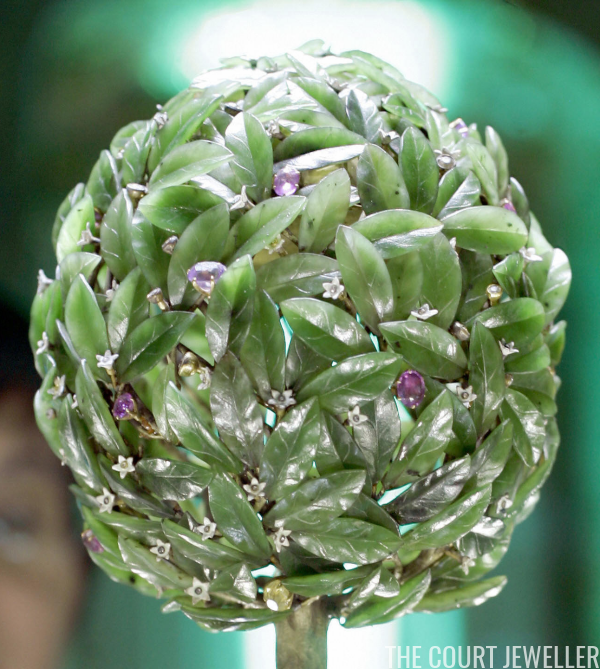 |
| The Bay Tree Egg is displayed at Charlottenburg Castle in Berlin, 15 June 2005 (MICHAEL KAPPELER/AFP/Getty Images) |
Here’s a closer look at the leafy portion of the bay tree. The egg is made of gold and white and green enamel, set with numerous gems, including diamonds, rubies, citrines, amethysts, white onyx, pearls, and jade. The egg’s surprise is triggered by touching a small lever, disguised as a little piece of fruit, nestled among the tree’s leaves.
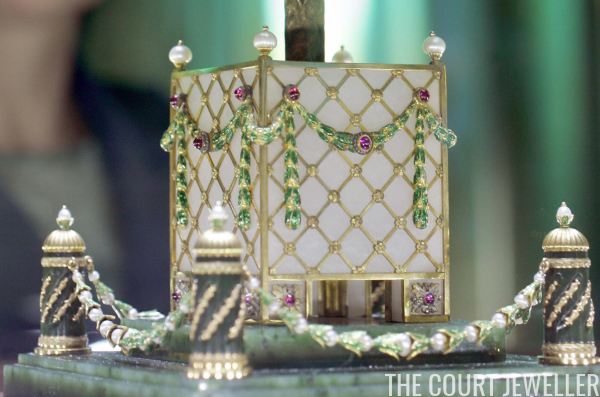 |
| The Bay Tree Egg is displayed at Charlottenburg Castle in Berlin, 15 June 2005 (MICHAEL KAPPELER/AFP/Getty Images) |
And here’s a view of the little jeweled box that contains the tree, as well as the elaborate base that surrounds it. The bay tree has changed hands numerous times since it was confiscated from the imperial family a century ago. Emanuel Snowman, a representative of Wartski, the famous Fabergé dealers in London, purchased the egg in 1927, presumably from the Soviet government. The firm sold the egg in 1934 to a British solicitor, Allan Gibson Hughes; Wartski purchased the egg back from Hughes’s estate when he died unexpectedly five years later.
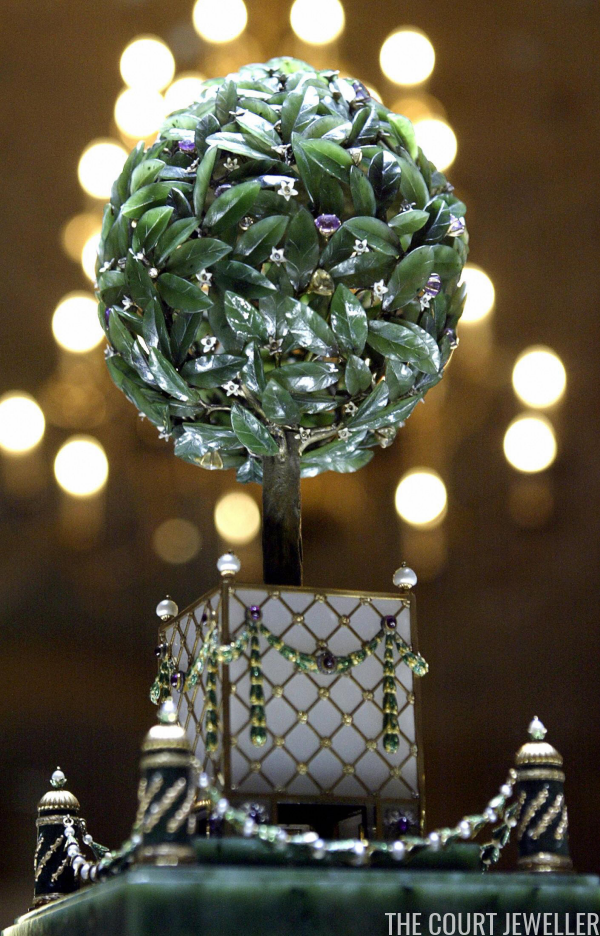 |
| The Bay Tree Egg is displayed at the Kremlin in Moscow after its purchase by Viktor Vekselberg, 18 May 2004 (YURI KADOBNOV/AFP/Getty Images) |
In 1947, the egg was sold at auction at Sotheby’s in London. Its most famous mid-century owner was Malcolm Stevenson Forbes, the American entrepreneur who is most famous for publishing Forbes Magazine. He amassed a large collection of Fabergé eggs, and the Bay Tree Egg remained in the Forbes collection from 1965 until 2004, when it was sold to a Russian billionaire, Viktor Vekselberg.
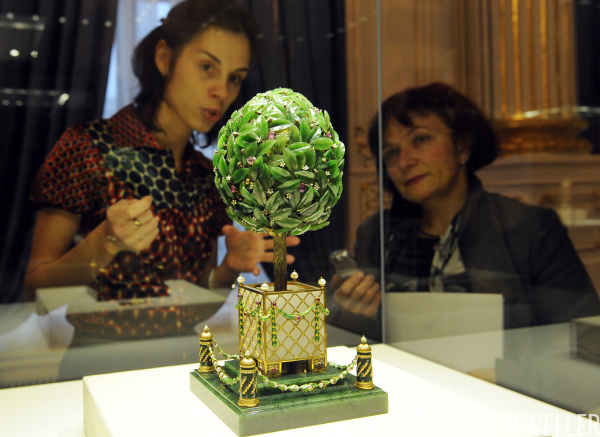 |
| Visitors view the Bay Tree Egg at Viktor Vekselberg’s museum in Saint Petersburg, 19 November 2013 (OLGA MALTSEVA/AFP/Getty Images) |
Now back home in Russia, the Bay Tree Egg resides with eight other imperial Fabergé eggs in Vekselberg’s privately-owned Fabergé museum in Saint Petersburg. The museum collection has been housed in the restored Shuvalov Palace in the city since 2013. Interestingly, the other imperial egg made by Fabergé in 1911 — the Fifteenth Anniversary Egg, which commemorated the coronation of Nicholas and Alexandra — is also housed in Vekselberg’s museum.

